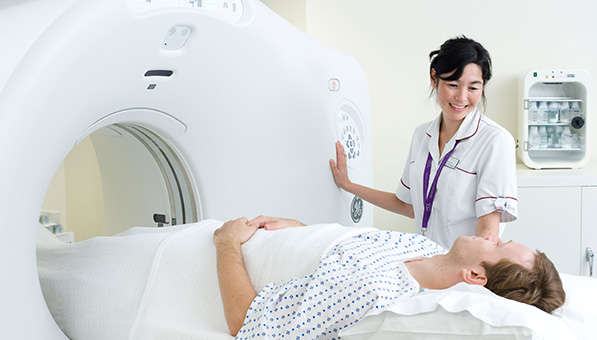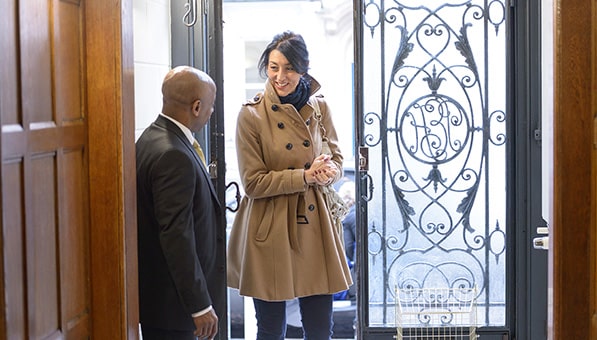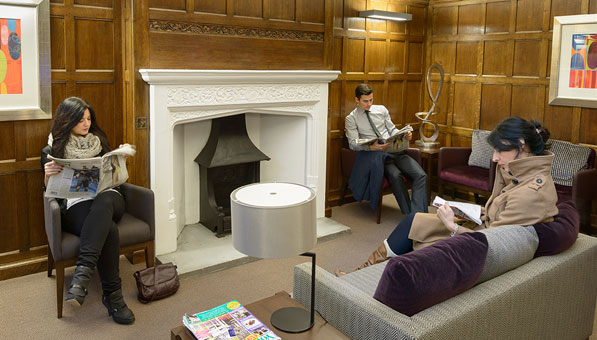Private Mole Check London
Individuals at risk of skin cancer should have a trained dermatologist examine their moles at least once per year. Our qualified dermatologists provide private mole screening services from our clinic in the Harley Street area of London
Remove concerns about suspicious moles with our expert Mole Check/Screening service
- Advanced mole screening techniques
- In-depth testing and analysis
- Treatment by highly qualified and experienced Consultant Dermatologists if required
Check your moles this summer
We should all be checking our moles at least once a month but during the summer this routine becomes even more important. Our skin is more exposed to UV rays and this increases the risk of cancerous moles developing.
However, this doesn’t just mean the appearance of new moles, as existing moles can also change as a result of their interaction with sunlight. Identifying a problem with a mole in the early stages will reduce the chances of melanoma developing and potentially spreading to other parts of the body.
Do you need a mole to be screened?
The danger signs to look out for include:
- When two halves of the mole look irregular or do not match each other
- If you notice the edges are blurred or notched
- If there is colour variation across the mole, which may look black or brown, sometimes featuring bits of red, white, blue or pink
- When the diameter of the mole exceeds 6mm (roughly ¼ inch) – although melanomas can sometimes be smaller
- If either the shape, size or colour of the mole appears to be changing
- You experience bleeding, weeping fluid from the mole, or it becomes painful or very itchy
Our mole screening services
At The Devonshire Clinic our Dermatologists are all experts in assessing moles. They will carefully examine your skin and utilise Dermoscopy to assess each mole in detail. In certain situations, your specialist will arrange for you to undergo digital mole mapping. This involves taking a number of digital images of all the moles on your skin which are then put into storage. Every 6-12 months new photographs are taken and compared with historic images.
Suspected melanomas are identified by observing differences in your existing moles, using the ABCDE system of comparison, or new moles that suddenly appear. If a mole is suspected of being cancerous, the diagnosis will be checked by taking a biopsy, in which some or all of the mole is removed and examined under a microscope to see if it contains cancer cells.
ABCDE System
There are three types of skin cancer which all have a different appearance. The following ABCD-guide shows you how changes in mole shape might indicate a ‘melanoma’.
Asymmetry – the two halves of the area may differ in shape
Border – the edges of the area may be irregular or blurred, and sometimes show notches
Colour – this may be uneven. Different shades of black, brown and pink may be seen
Diameter – most melanomas are at least 6mm in diameter. Report any change in size, shape or diameter to your doctor
Expert – if in doubt, check it out! If your GP is concerned about your skin, make sure you see a Consultant Dermatologist, the most expert person to diagnose a skin cancer. Your GP can refer you via the NHS
It is important to remember that melanoma is a rare condition, and most moles that are biopsied will come up negative for cancer, however it is always best to have these moles checked to be sure.
Removing a suspicious mole
We use two safe methods to remove potentially cancerous moles:
Excision biopsy: This is the most common type of procedure that involves the removal of the entire mole using a scalpel along with the underlying tissue surrounding it. The wound is closed with stiches and will leave a scar. The removed tissue is then examined for cancerous cells.
Shave excision: A ‘shave’ procedure can be used to remove some raised moles. This will not require stitches and will not usually leave a significant scar on the skin.
Protecting your skin this summer
Here are three ways to give your skin maximum protection:
Protective clothing: Dark and brighter colours absorb more UV rays compared to paler shades. Thicker fabrics, such as canvas and denim, offer more protection than loosely woven material. Loose fitting clothing is a better choice than tighter garments, as they are less likely to stretch and expose skin to the sun.
Sunglasses: Sand can reflect up to 15% of UV light, water 10% and sea foam 25%. This means UV radiation comes into contact with our skin and eyes twice, doubling the exposure levels. Polarised lensed sunglasses reduce glare, but make sure to choose a pair that guarantees 99-100% UV filtering.
Sunscreen: Applying sunscreen will only be effective when enough is used. Follow the instructions and apply at least 30 minutes before heading out into the sun. An SPF of 30 or higher is recommended if outdoors for long periods of time. If you perspire, come into contact with water or towel, the sunscreen must be reapplied.
Even if the temperature is not very high, always put on sunscreen before going outdoors as the strength of UV rays are often deceiving. Sunburn may seem like a short-term problem that can be soothed and repaired but it is a sign of damage to DNA in your skin and can potentially lead to skin cancer. Children who have experienced severe sunburn face a higher risk of developing melanoma later in life, so their skin must be protected at all times.
Enquire about
Private Mole Check London
Frequently Asked Questions Mole Removal
Yes, mole removal can leave scars, although these are usually less obvious than the mole itself. Using
a method such as shave excision means you won’t need stitches, so there may be less scarring.
Surgical excision means the cut is deeper with stitches, so there may be more scarring. The amount
of scarring you have depends on the mole’s location, the type of surgery, and your age.
Most moles are harmless and don’t need to be removed. But if a mole has changed colour, shape, or
size, or if it’s started to itch or bleed, your dermatologist may advise you to have it removed to check
for signs of cancer. And some people choose to have moles removed for cosmetic reasons.
Most moles are harmless, but in rare cases, they can develop into melanoma, which is a severe type
of skin cancer. Signs to watch for include a change of colour, shape, texture, itching, or oozing. Or
any changes to the mole, such as scaliness or lumpiness. Ask your doctor for advice if you’re
worried.
Moles are round or oval skin growths of around 5 millimetres, formed from clusters of pigment cells
or melanocytes. They are very common, with many people having at least ten, usually on the upper
body. Moles are generally brownish or pinkish in colour, with darker moles more likely if your skin is
also darker. Some people have moles from birth, but it’s more common for them to appear during
childhood and go on forming until middle age, after which they often fade.
If you have a mole removed using excision biopsy, shave excision or Mohs surgery, you’ll be offered
a local anaesthetic before the procedure, which numbs the whole area, so you won’t feel any pain.
The local anaesthetic might sting for a while when it first goes in. Afterwards, you may need over-
the-counter pain relief for a few days to manage any soreness.
Your recovery time depends on your age and the type of removal procedure you’ve had. Young
people tend to heal faster, but the larger the incision, the longer it will take. Take care of the wound
by following your dermatologist’s advice. In most cases, it will heal within a few weeks but it’s a
good idea to keep out of the sun, use a stronger sunscreen and wear clothes that cover the wound
where possible.
If your mole is being removed to check for cancer or for cosmetic reasons, it can be done in two ways:
Excision biopsy, where the mole is removed along with a margin of tissue around it and then closed
with stitches. The tissue that’s been removed is then checked under a microscope.
Shave excision is when a mole that is raised above the skin is removed by shaving off tiny layers. It
means you don’t need to have stitches.
In rare cases, where a few mole cells remain in the skin, a mole might reappear after removing it,
but one appointment is usually enough for complete mole removal.
Yes. Moles can be removed either because they may be cancerous or for cosmetic reasons.
However, any mole that’s removed is sent for examination to check there are no signs of cancer.
As with any procedure, there is a small risk of infection. If the area around the mole starts to get red,
swollen, and warm, contact your dermatologist to get it checked. You might need to have some
antibiotics to clear any infection. There is also a small risk of the mole returning if some cells are left
behind.
Read our
Patient Stories
I can’t recommend this clinic highly enough. The treatment I received for my skin cancer was first class
AL, LondonThe team at the Devonshire Clinic were excellent. From booking my appointments to every part of my treatment, I felt that I was in the very best hands.
CH, LondonBefore visiting the clinic I had quite high expectations, but I was blown away by just how brilliant the experience was. I felt like I was the only patient in the clinic. Simply the best medical treatment.
SF, London

